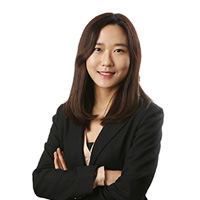Two Koreas talk protocols, security for April summit
By Jung Min-kyungPublished : April 5, 2018 - 16:00
The two Koreas held working-level talks at the truce village of Panmunjeom on Thursday to discuss security measures, protocols and media coverage for their upcoming summit.
The meeting kicked off around 10 a.m. (Seoul time) and lasted for four hours on the southern side of the joint security area, also known as Panmunjeom, according to the South Korean presidential office Cheong Wa Dae.

The South’s five-member delegation was led by Kim Sang-gyun, a senior director from the National Intelligence Service, while the North’s six-member team was headed by Kim Chang-son, an official from the North’s state affairs commission, which is chaired by North Korean leader Kim Jong-un.
Unlike previous talks between officials, the results of the meeting will remain classified to protect information on security operations, a Cheong Wa Dae official told a group of reporters.
Last week, South and North Korea agreed to hold a summit on April 27 at the southern side of the JSA, situated within the demilitarized zone that bisects the Korean Peninsula. It will be the third inter-Korean summit and the first time a North Korean leader crosses the border since the end of the 1950-53 Korean War. The first two inter-Korean summits were held in Pyongyang in 2000 and 2007.
Experts, noting the shift in the summit’s venue, said that the focus of Thursday’s talks would be about drawing up a new plan for the safety of the two leaders.
“The focus of the talks is likely to be about security matters and how Kim Jong-un will smoothly and safely cross the border -- how the South and North’s respective secret service will handle the situation needs to be discussed” said Hong Min, director of the North Korean studies division at the Korea Institute for National Unification.
“Since the summit is expected to take place within the JSA, which is supervised by the United Nations Command, it will require a ‘special and different kind’ of security detail and plan compared to the ones let’s say held within Seoul,” the Seoul-based expert added, highlighting the unique nature of the JSA.
On the South’s reception for Kim, Hong said it would also have to be planned within a framework that would not fuel controversy in the international community.
Former South Korean Presidents Kim Dae-jung and Roh Moo-hyun, who visited the North for summits, each received a large-scale military salute from the reclusive nation as a sign of respect, upon arrival.
Thursday’s meeting was originally scheduled to be held Wednesday, but the North requested that it be delayed by one day. The South also changed its delegation list at the last minute. It was originally to be a seven-member delegation led by Cho Han-ki, a presidential secretary on protocol.
Separate working-level talks will be held Saturday to discuss the establishment of a communication hotline between the leaders of the respective Koreas, which Seoul and Pyongyang have agreed to install.
A Cheong Wa Dae official said that although it remains undecided, additional working-level talks may take place before the summit.
Last month, special envoys for President Moon Jae-in visited Pyongyang, where they talked to Kim, who expressed his willingness to hold an inter-Korean summit and to discuss the issue of denuclearization with the United States.
US President Donald Trump has said he will meet North Korea’s Kim in May. But the date and location of the Trump-Kim summit have yet to be decided.
South and North Korea remain technically at war, as the 1950-53 Korean War ended with an armistice and not a peace treaty.
By Jung Min-kyung (mkjung@heraldcorp.com)






![[Out of the Shadows] Seoul room clubs offer drugs to compete for clientele](http://res.heraldm.com/phpwas/restmb_idxmake.php?idx=644&simg=/content/image/2024/11/05/20241105050566_0.jpg&u=20241105163851)











